Ko Mak is a small island located in the Trat Province of Thailand. The island is a popular tourist destination, known for its stunning beaches, clear waters, and laid-back atmosphere.
However, Ko Mak is also home to a diverse range of bird species that are either endemic or migratory. Birds in Ko Mak are some of the most spectacular creatures that can be found on the island, and they play an essential role in maintaining the island’s ecological balance.
From the majestic Chinese egret to the small common kingfisher, the birdlife on Ko Mak is a sight to behold.
In this article, we will explore some of the most common and rare bird species that reside on this tropical island and learn more about their habitats, behavior, and threats they face.
1. Indian Roller
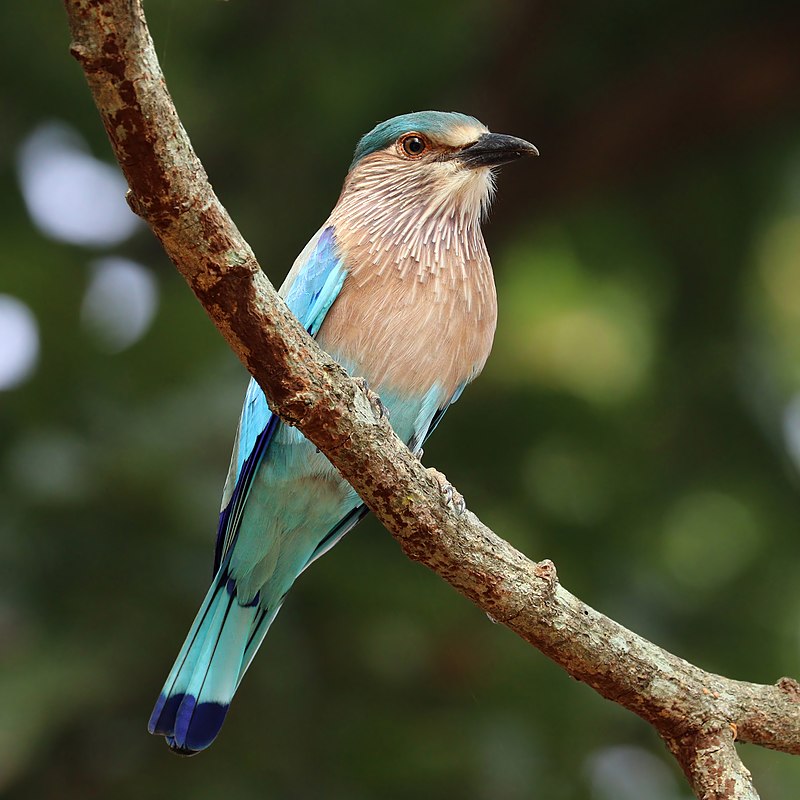
The Indian roller is a beautiful bird of the Coraciidae family. It has an average length of 12-13 inches and weighs 5.9 to 6.2 ounces with a wingspan of 26-29 inches.
Its face and throat are pinkish, while its head and back are brown with blue on its rump, light blue markings on one side of the wing, dark blue markings on other side making it easily distinguishable in flight.
Both male and female have same colouration but males tend to be slightly larger than females though they can only be differentiated when seen together closely due to similar colouring pattern between sexes.
The Indian Roller makes spectacular aerial dives from great heights during courtship display which attracts many viewers each year.Scientific classification:
| Kingdom | Animalia |
| Phylum | Chordata |
| Class | Aves |
| Order | Coraciiformes |
| Family | Coraciidae |
| Genus | Coracias |
| Species | C. benghalensis |
Also Featured In: Common Birds in India, Birds That Live in the Jungle
2. Common Kingfisher
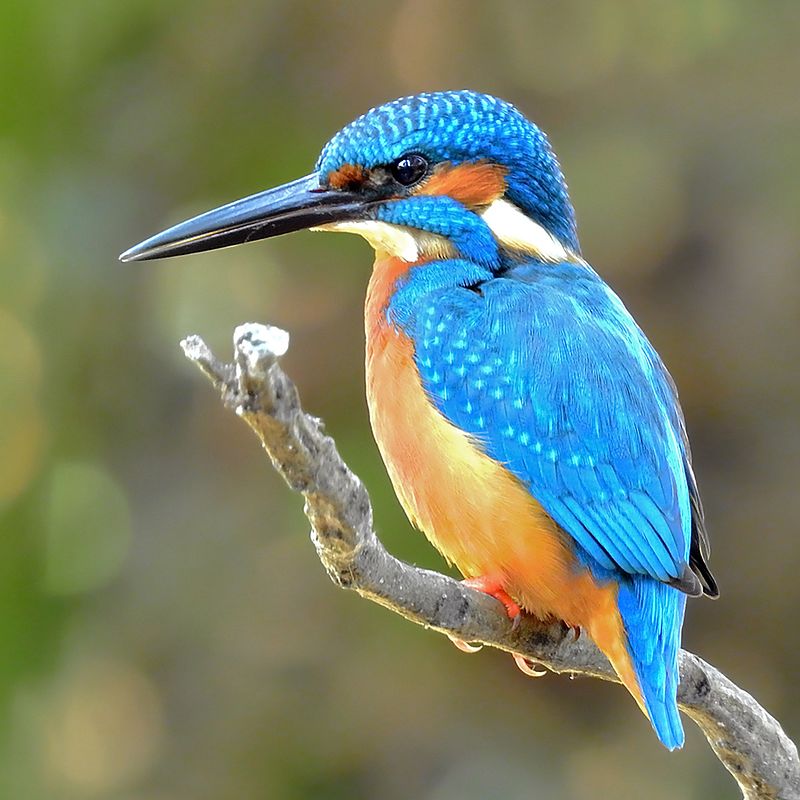
The Common Kingfisher is a small, sparrow-sized bird that can be found across Eurasia and North Africa. It has the typical short tail and large head of kingfishers with seven different subspecies recognized in its range.
They are mainly resident birds but will migrate away during winter when rivers freeze over. The species usually live near bodies of water such as streams or lakes.
Where they hunt for fish by diving from above into the water after spotting their prey below them.
These brightly coloured birds have an unmistakable vibrant blue plumage along with orange underparts and white patches on their wings which makes them easy to recognize amongst other similar looking species.
Their call is loud and shrill making it one of the most recognizable sounds heard around wetlands throughout Europe.Scientific classification:
| Kingdom | Animalia |
| Phylum | Chordata |
| Class | Aves |
| Order | Coraciiformes |
| Family | Alcedinidae |
| Subfamily | Alcedininae |
| Genus | Alcedo |
| Species | A. atthis |
Also Featured In: Ukrainian Birds You Should Know, Most Common Romanian Birds
3. Common Myna
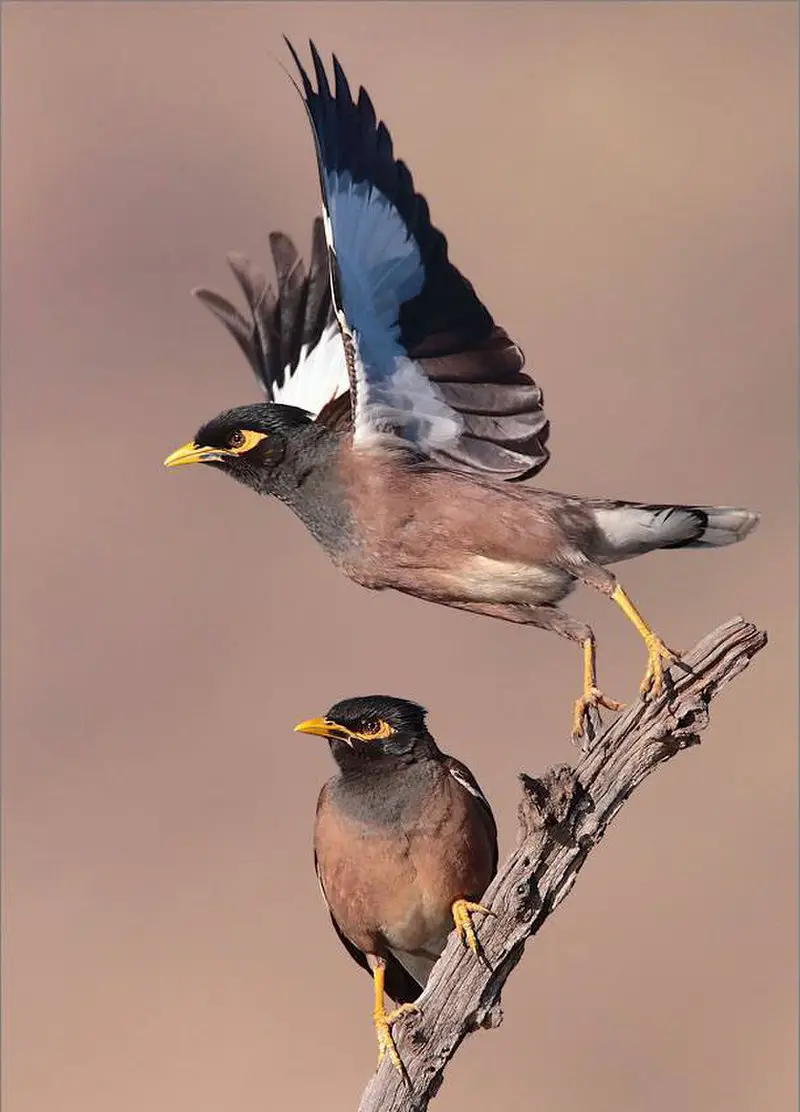
The Common myna is a bird native to Asia and belongs to the Sturnidae family. It has an omnivorous diet, strong territorial instinct and is well adapted to urban environments.
With its range increasing rapidly, it was declared one of the most invasive species by IUCN in 2000. Its distinctive features include black head with a yellow bill, brown body and white tips on wings & tail feathers.
The common myna communicates through loud clicking noises that can easily be heard from long distances in both rural as well as urban areas alike.
They are known for their intelligence; they mimic sounds such as human speech or other birds’ calls making them popular pets among households too.Scientific classification:
| Kingdom | Animalia |
| Phylum | Chordata |
| Class | Aves |
| Order | Passeriformes |
| Family | Sturnidae |
| Genus | Acridotheres |
| Species | A. tristis |
Also Featured In: Most Common Types of Bangladeshi Birds, Birds of Kauai, Hawaii
4. White-Bellied Sea Eagle
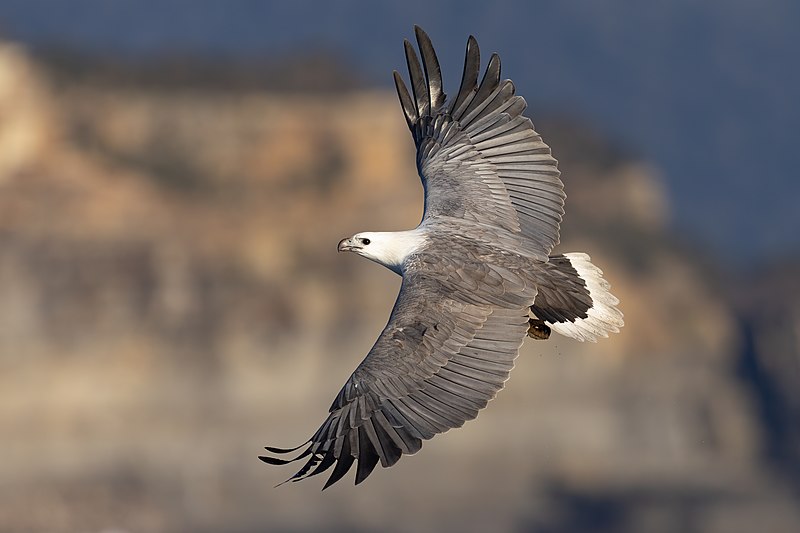
The White-bellied sea eagle is an impressive large bird of prey that belongs to the Accipitridae family.
It was first described by Johann Friedrich Gmelin in 1788 and it is closely related to Sanford’s sea eagle found in the Solomon Islands.
The adult white-bellied sea eagles have a stunning appearance with their white heads, dark brown bodies, and long wings which span up to 1.8 meters across.
They can be seen soaring above coastal areas searching for fish, reptiles or small birds as they hunt for food.
These majestic creatures are also known for being incredibly vocal when nesting – making loud cackling noises at dawn and dusk near riverside forests.Scientific classification:
| Kingdom | Animalia |
| Phylum | Chordata |
| Class | Aves |
| Order | Accipitriformes |
| Family | Accipitridae |
| Genus | Haliaeetus |
| Species | H. leucogaster |
Also Featured In: South Australian Birds, Birds of Tasmania
5. Brahminy Kite
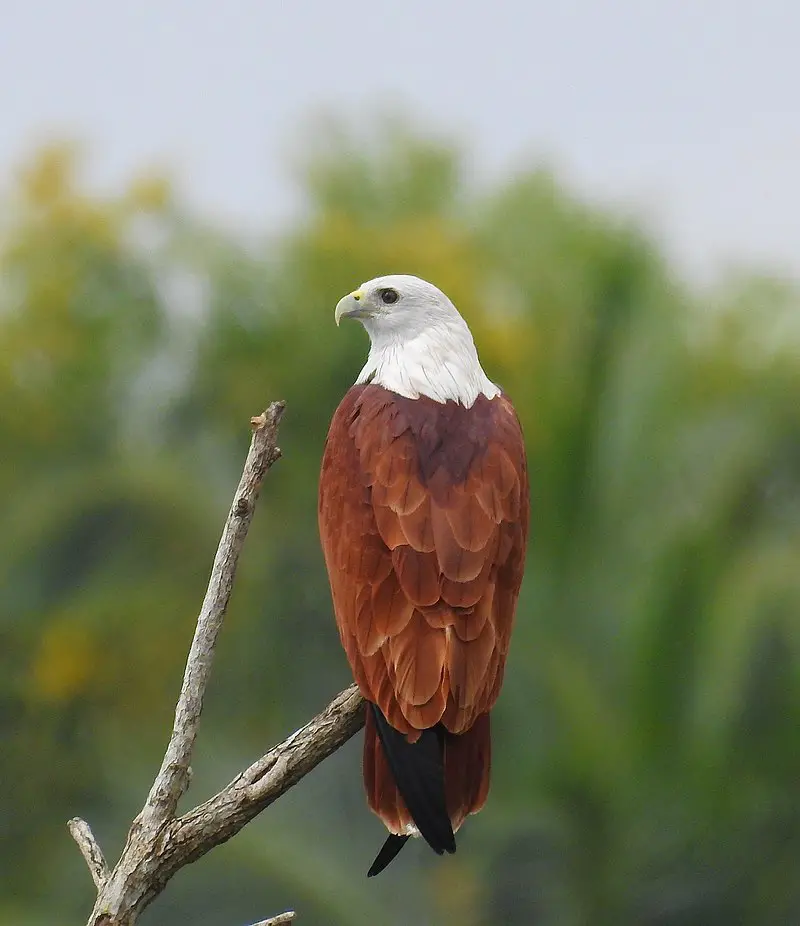
The Brahminy Kite is a majestic bird of prey native to the Indian subcontinent, Southeast Asia and Australia. It was formerly known as the red-backed sea eagle in Australia.
This medium-sized raptor has a distinctive white head with rufous brown feathers covering its body, making it easily recognisable from far away. The wingspan can reach up to 5 feet wide.
Brahminy kites are found mainly on coasts and inland wetlands where they feed mostly on dead fish or carrion left by other animals.
They also hunt for small mammals such as rodents or reptiles like lizards and snakes during dry spells when food sources become scarce.
These birds have adapted well over time and will even scavenge for food near picnic sites or urban areas if need be.
Overall these beautiful creatures are an important part of their local ecosystems which rely heavily upon them for keeping animal populations balanced through natural predation methods instead of manmade ones; this ensures that nature remains healthy so future generations may enjoy it too.Scientific classification:
| Kingdom | Animalia |
| Phylum | Chordata |
| Class | Aves |
| Order | Accipitriformes |
| Family | Accipitridae |
| Genus | Haliastur |
| Species | H. indus |
Also Featured In: Birds that Live around Brisbane, Birds that Charles Darwin Studied
6. Black-Capped Kingfisher
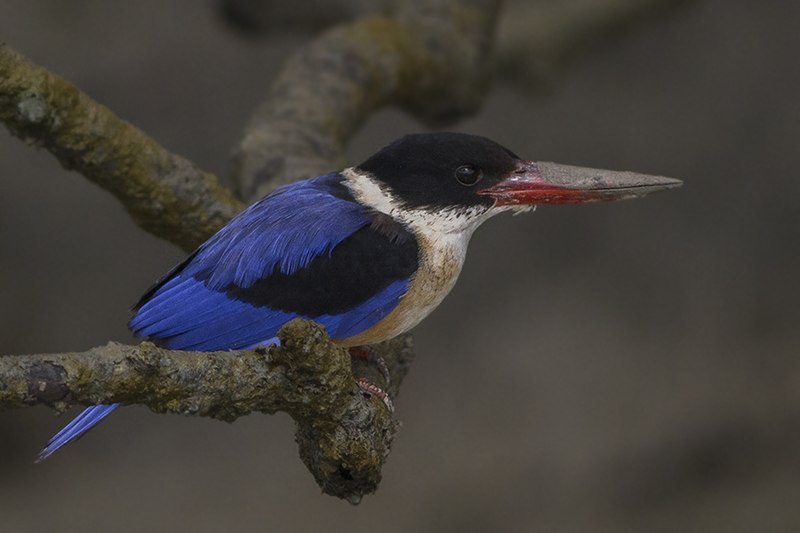
The Black-capped Kingfisher is a beautiful species of tree kingfishers found in tropical Asia from India east to China, Korea and Southeast Asia.
Its striking features include its black cap that contrasts with its bright blue back, wings and tail.
It has white underparts which makes it easily identifiable when perched atop trees or flying above the ground searching for food.
During winter months some northern populations migrate south seeking warmer climates such as Sri Lanka, Thailand, Borneo and Java.
The diet of this bird consists mainly of insects but may also feed on small reptiles like lizards or snakes if available.
They can be seen generally near water bodies where they hunt their prey by diving into the waters from a high perch.Scientific classification:
| Kingdom | Animalia |
| Phylum | Chordata |
| Class | Aves |
| Order | Coraciiformes |
| Family | Alcedinidae |
| Subfamily | Halcyoninae |
| Genus | Halcyon |
| Species | H. pileata |
Also Featured In: Hong Kong Birds You Need to See, Birds that Migrate to Sri Lankan
7. Yellow-Vented Bulbul
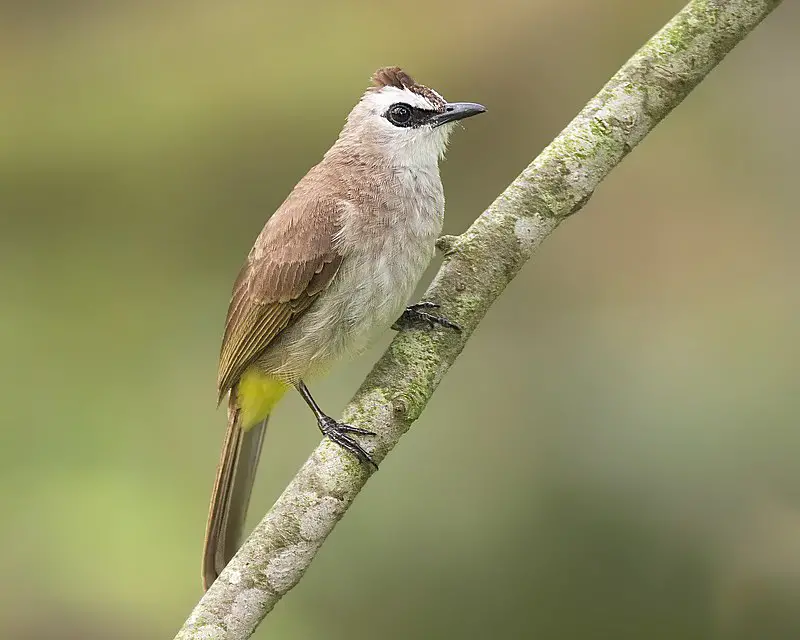
The Yellow-vented Bulbul is a stunning passerine bird from southeastern Asia, with its bright yellow and black plumage. It breeds in open habitats such as cultivated areas, but rarely enters deep forests.
They tend to be nomadic, wandering around and searching for food sources. During the breeding season they form pairs and build their nests at least two metres above ground level in trees or shrubs.
The female lays 2–4 eggs which are incubated by both parents over 13–14 days before hatching into chicks that fledge after 16–17 days of nestling stage..
These birds feed mainly on fruits or berries found in gardens or fields; insects like caterpillars may also make up part of their diet.
As beautiful as it looks, this species has a loud call which can become quite irritating if heard frequently.Scientific classification:
| Kingdom | Animalia |
| Phylum | Chordata |
| Class | Aves |
| Order | Passeriformes |
| Family | Pycnonotidae |
| Genus | Pycnonotus |
| Species | P. goiavier |
Also Featured In: Birds of the Philippines, Common Philippines Birds
8. Hoopoes
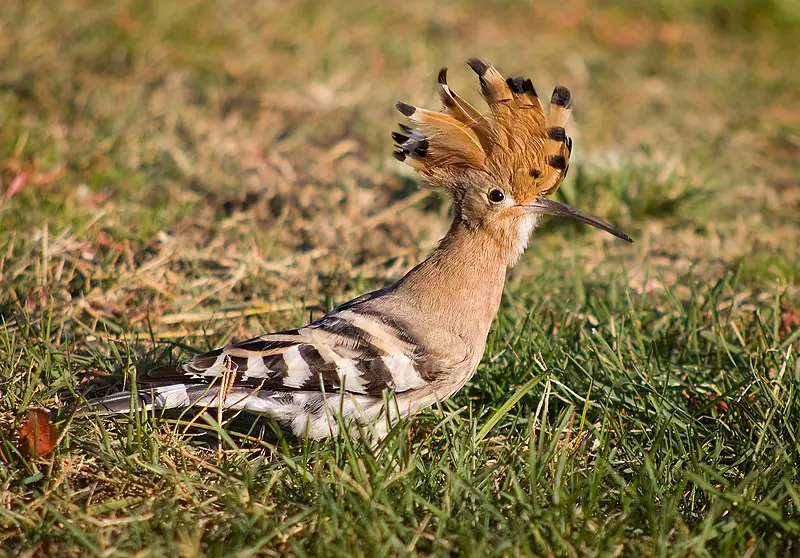
Hoopoes are a fascinating species of bird, found across Africa, Asia and Europe. They have beautiful plumage with unique ‘crowns’ of feathers on their heads.
Three living and one extinct species exist – although for some time they were all classed as the same species: Upupa epops. Some taxonomists still believe this to be true.
These birds are often associated with royalty due to the impressive crown-like crest atop their head, adding an extra element of mystery and exoticism to these creatures.
Hoopoes can also produce loud calls which sound like “hoo-poo” hence why they’ve been given such an apt name.Scientific classification:
| Kingdom | Animalia |
| Phylum | Chordata |
| Class | Aves |
| Order | Bucerotiformes |
| Family | Upupidae Leach, 1820 |
| Genus | Upupa Linnaeus, 1758 |
Also Featured In: Egyptian Birds, Turkey Birds You Should Know
9. Eurasian Hoopoe
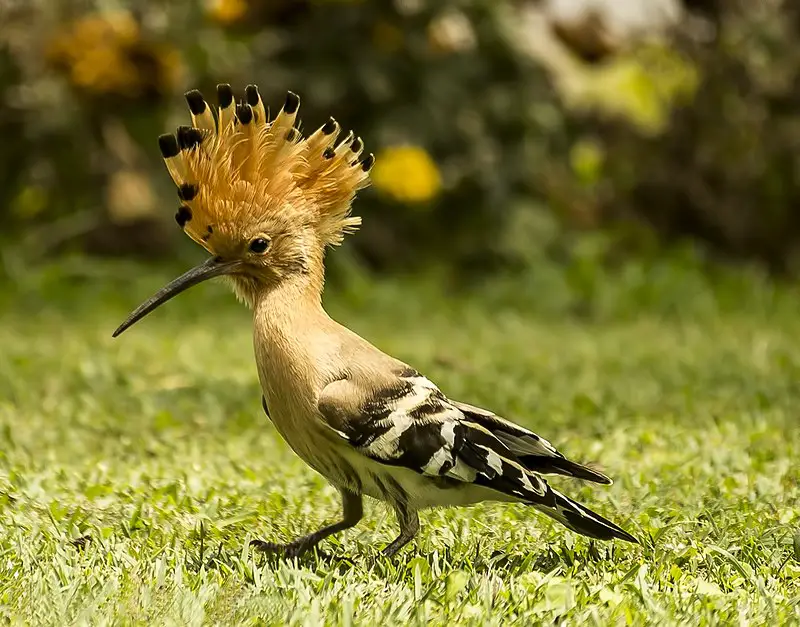
The Eurasian hoopoe is a unique and stunning bird. Its cinnamon-coloured body contrasts sharply with its black-and-white wings, while the tall erectile crest gives it an even more distinctive appearance.
It also has a broad white band across its black tail and a long narrow downcurved beak. When you hear this species of birds call, it’s typically “oop-oop-oop”, very soft yet unmistakable in tone.
This beautiful creature can be found throughout Europe, Asia and northern Africa where they mainly migrate for cooler climates during winter months.
The Eurasian hoopoe is truly one of nature’s most majestic creations – from their vibrant plumage to their mellow calls – making them unforgettable creatures that will never cease to amaze us all.Scientific classification:
| Kingdom | Animalia |
| Phylum | Chordata |
| Class | Aves |
| Order | Bucerotiformes |
| Family | Upupidae |
| Genus | Upupa |
| Species | U. epops |
Also Featured In: Native Birds Of Germany, Most Common Nature Birds
10. Crested Serpent Eagle
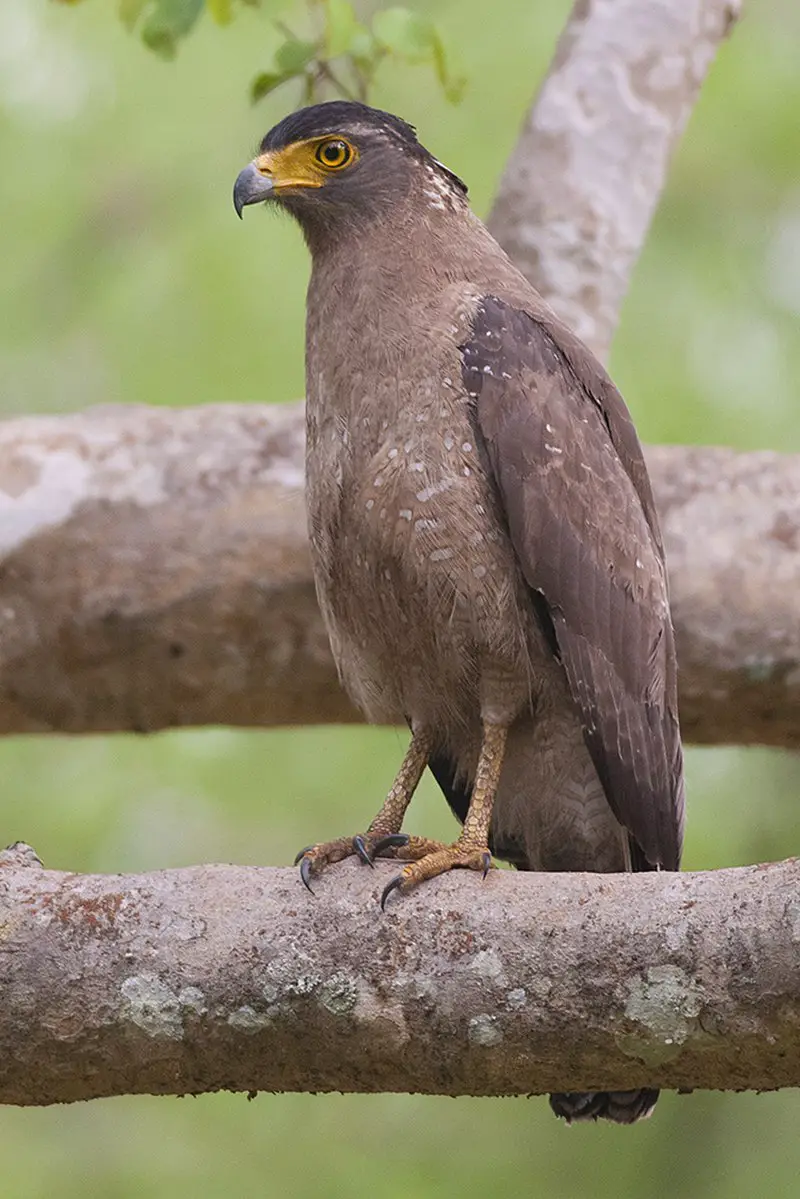
The Crested serpent eagle is a majestic bird of prey found across tropical Asia. With its prominent black and white crest, this medium-sized raptor can be seen soaring above forests in search of food.
It has an extensive range which includes the Indian Subcontinent, Southeast Asia and East Asia; some experts even argue that certain subspecies should be treated as separate species altogether.
This magnificent creature feeds on small animals such as lizards or rodents but will occasionally take larger birds or mammals if it gets the chance.
The Crested serpent eagle remains one of nature’s most impressive creatures to behold.Scientific classification:
| Kingdom | Animalia |
| Phylum | Chordata |
| Class | Aves |
| Order | Accipitriformes |
| Family | Accipitridae |
| Genus | Spilornis |
| Species | S. cheela |
Also Featured In: Birds of Myanmar, Birds that Live in Borneo Island
11. Macronus Gularis
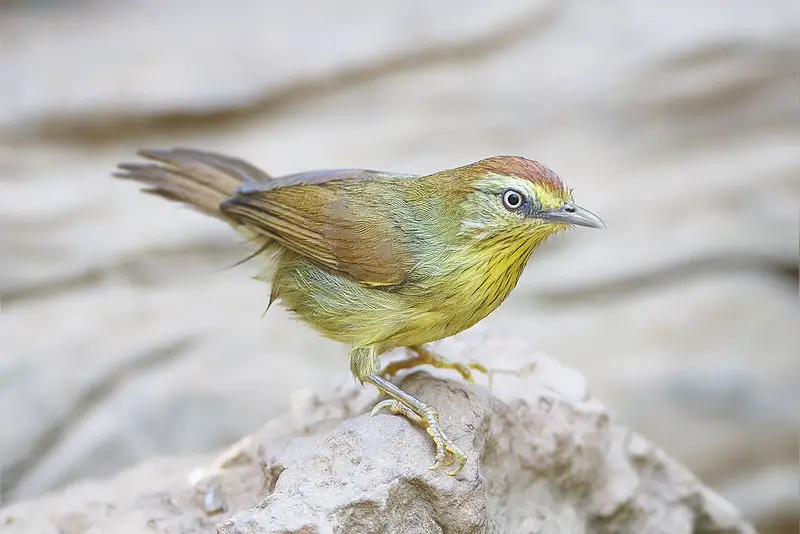
The Macronus gularis bird, commonly known as the Pin-Striped Tit-Babbler or Yellow-Breasted Babbler, is a species of Old World babbler found in South and Southeast Asia.
It was first described by American naturalist Thomas Horsfield in 1822 based on specimens collected from Sumatra.
The name ‘Macronus’ comes from the Greek words for “long” and “nose”, referring to its long beak.
They have brownish gray upperparts with paler underparts covered with bold black streaks along their sides and wings; they also have yellow throats which make them easily recognizable at a distance.
Macronus gularis are social birds that live in small groups of 3-10 individuals and communicate through loud calls such as chirps or trills but also use contact calls like whistles when separated from other members of their group.
Their diet consists mainly of insects, fruits, seeds, flowers buds – making them important pollinators.Scientific classification:
| Kingdom | Animalia |
| Phylum | Chordata |
| Class | Aves |
| Order | Passeriformes |
| Family | Timaliidae |
| Genus | Mixornis |
| Species | M. gularis |
Also Featured In: Common Birds Found in Nepal, Most Common Tripura Birds You Need to Know
12. Black-Naped Monarch
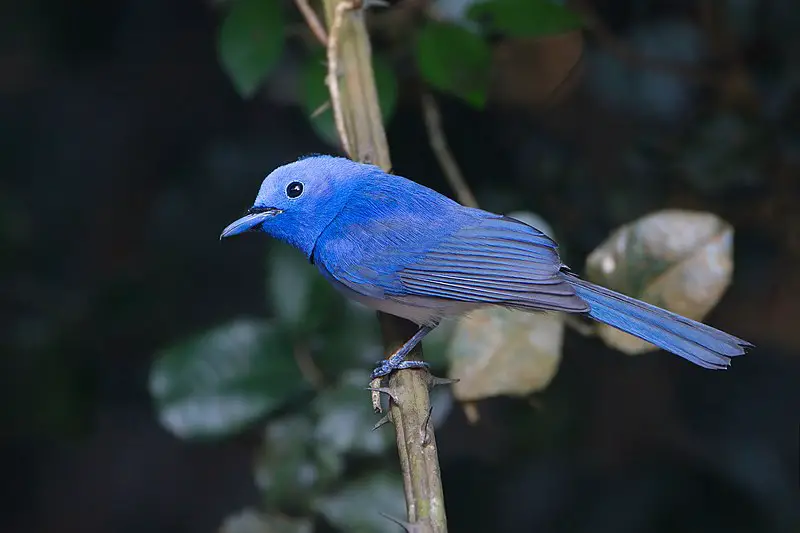
The Black-naped Monarch is a beautiful and agile passerine bird native to Southern and South East Asia.
With its distinct black patch on the back of it’s head, this small but strong species stands out among other birds in the area.
The male has vibrant blue plumage with an elegant narrow black half collar (“necklace”) which makes him even more attractive.
Females are comparatively duller with olive brown wings and light yellowish underparts which helps them blend into their environment better for camouflage purposes.
These birds feed mainly on insects, spiders and fruits making them beneficial as they help reduce pests while also providing nutrients to local vegetation by dispersing seeds from fruit consumption.Scientific classification:
| Kingdom | Animalia |
| Phylum | Chordata |
| Class | Aves |
| Order | Passeriformes |
| Family | Monarchidae |
| Genus | Hypothymis |
| Species | H. azurea |
Also Featured In: Singapore Birds, Gujarati Birds
13. Scaly-Breasted Munia
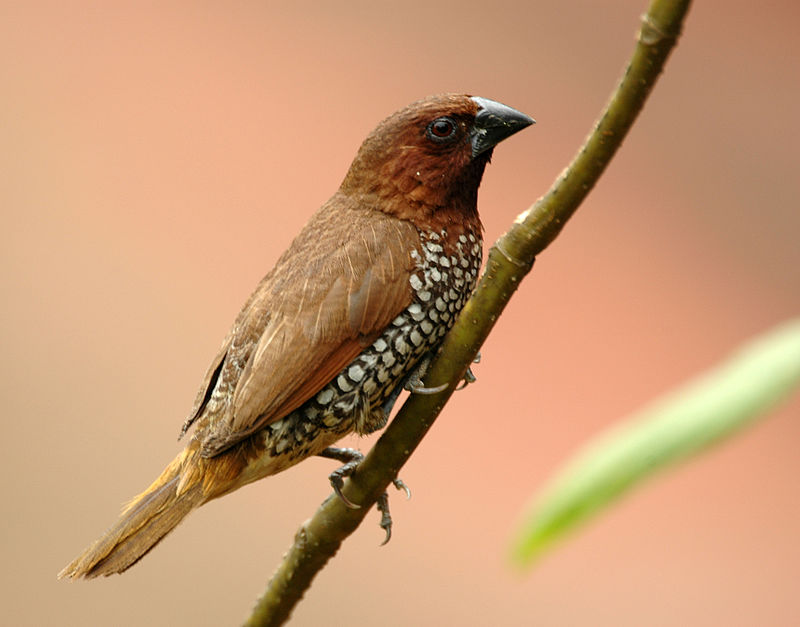
The Scaly-breasted Munia is a small estrildid finch native to tropical Asia. It was formally described and named by Carl Linnaeus in 1758, as its name suggests from the distinct scale-like feather markings on the breast and belly.
The adult bird has brown upperparts, with white lower parts spotted blackish-brown. Its head is pale grey or whitish with an orange beak and legs; the eyes are dark brown.
This species feeds mainly on grass seeds, but also eats insects such as caterpillars in some areas of their range during breeding season.
An interesting fact about this bird is that it builds its nest out of plant stems woven together into a cup shape suspended from trees or shrubs.
Overall they are quite common birds which can often been seen hopping around near human habitation looking for food scraps.Scientific classification:
| Kingdom | Animalia |
| Phylum | Chordata |
| Class | Aves |
| Order | Passeriformes |
| Family | Estrildidae |
| Genus | Lonchura |
| Species | L. punctulata |
Also Featured In: Mauritius birds, Famous Paintings Birds
14. Black-Naped Tern
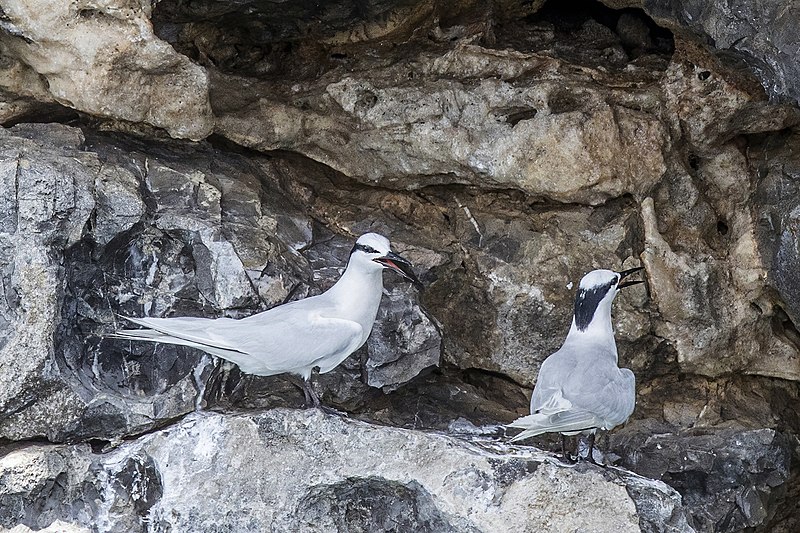
The beautiful Black-naped Tern is a seabird found in tropical and subtropical areas of the Pacific and Indian Oceans.
These terns measure around 30 cm long, with a wing span of 21 to 23 cm, black beaks and legs, yellow bill tips, long forked tails and white faces.
The breast has grayish-white feathers that extend down its back – forming an elegant nape hence their name.
They are rarely seen inland but they can stay close to coastal waters or even venture further out depending on seasonal changes.
Their diet consists mainly of fish which they hunt from above by hovering before plunging into the sea at high speed after prey. They also feed on crustaceans sometimes too.
All in all these birds have an interesting lifestyle; incredibly graceful when airborne yet ferocious hunters underwater making them quite a sight.Scientific classification:
| Kingdom | Animalia |
| Phylum | Chordata |
| Class | Aves |
| Order | Charadriiformes |
| Family | Laridae |
| Genus | Sterna |
| Species | S. sumatrana |
Also Featured In: Maldives birds, Birds You’ll Find in the Marshall Islands
15. Brown Shrike
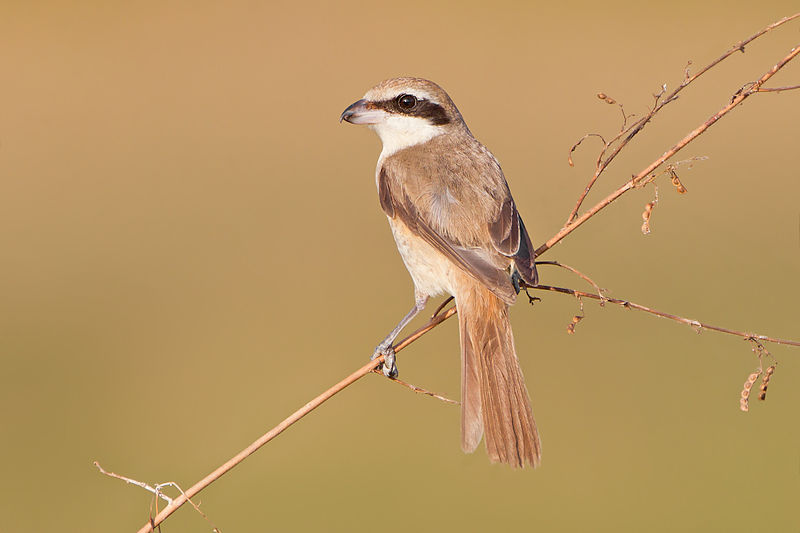
The Brown Shrike is a beautiful bird belonging to the shrike family, found mainly in Asia. It has a distinctive crest which gives it its Latin name ‘cristatus’.
They feed on insects and small vertebrates like lizards and mice, hence they are also called ‘butcher birds’.
These birds have brown upperparts with rufous wings, tail tipped white along with black mask through the eyes giving them an impressive look.
Despite their predatory nature these birds still remain quite popular amongst birdwatchers due to their vibrant colors and wide-ranging habitats across much of South East Asia making them easy targets for photography enthusiasts too.Scientific classification:
| Kingdom | Animalia |
| Phylum | Chordata |
| Class | Aves |
| Order | Passeriformes |
| Family | Laniidae |
| Genus | Lanius |
| Species | L. cristatus |
Also Featured In: Urban Birds of Hong Kong, Most Common Birds of Bihar
16. White-Rumped Shama
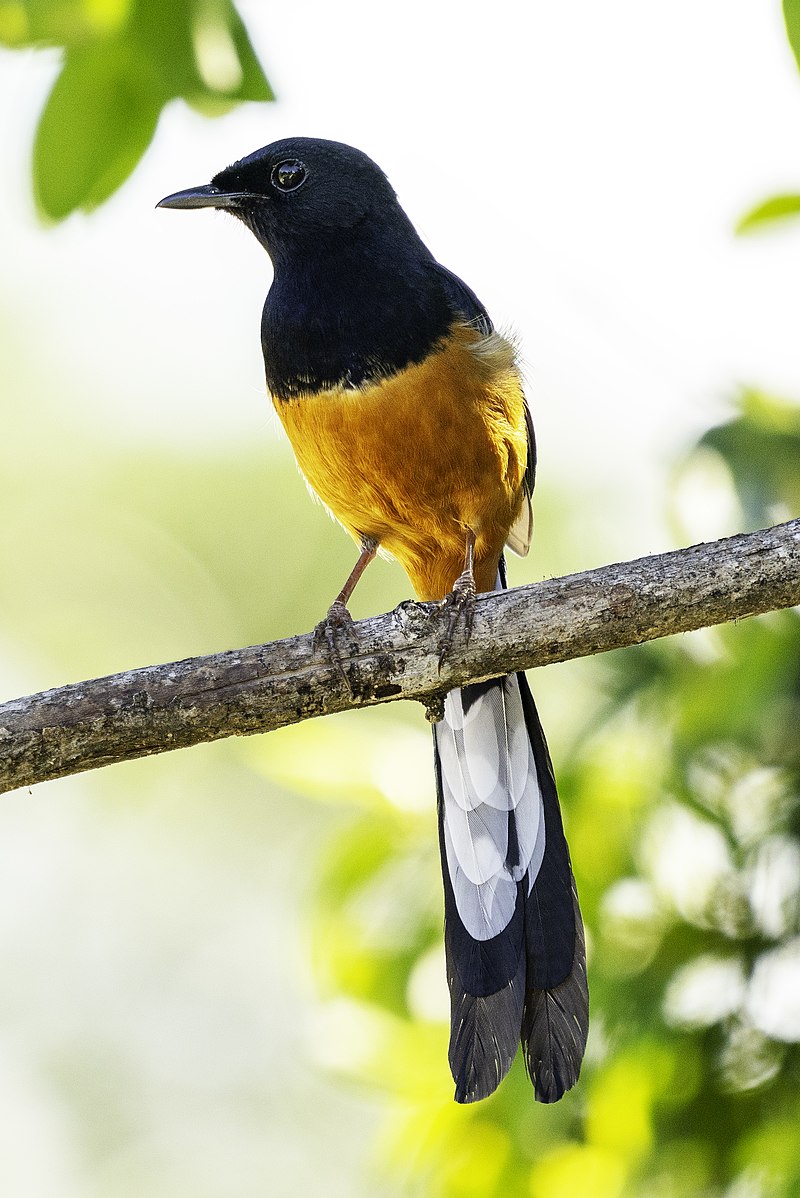
The White-rumped shama is a beautiful and popular bird of the Muscicapidae family. Native to densely vegetated habitats in India, Southeast Asia and other places due to its popularity as a cage-bird, it was formerly classified under the thrush family Turdidae.
It has distinctive features such as white rump patch on upper tail coverts which helps identify this species from others easily.
The male birds are known for their melodious singing capabilities while females lack that quality or sing very little compared to males making them perfect pets in households all over the world.
They feed mainly on insects but occasionally take fruits too, they prefer living close to water bodies like streams making them easy prey among predators when away from home.Scientific classification:
| Kingdom | Animalia |
| Phylum | Chordata |
| Class | Aves |
| Order | Passeriformes |
| Family | Muscicapidae |
| Genus | Copsychus |
| Species | C. malabaricus |
Also Featured In: Hawaii Birds, Most Common Songs Birds that Live around You
17. Crested Goshawk
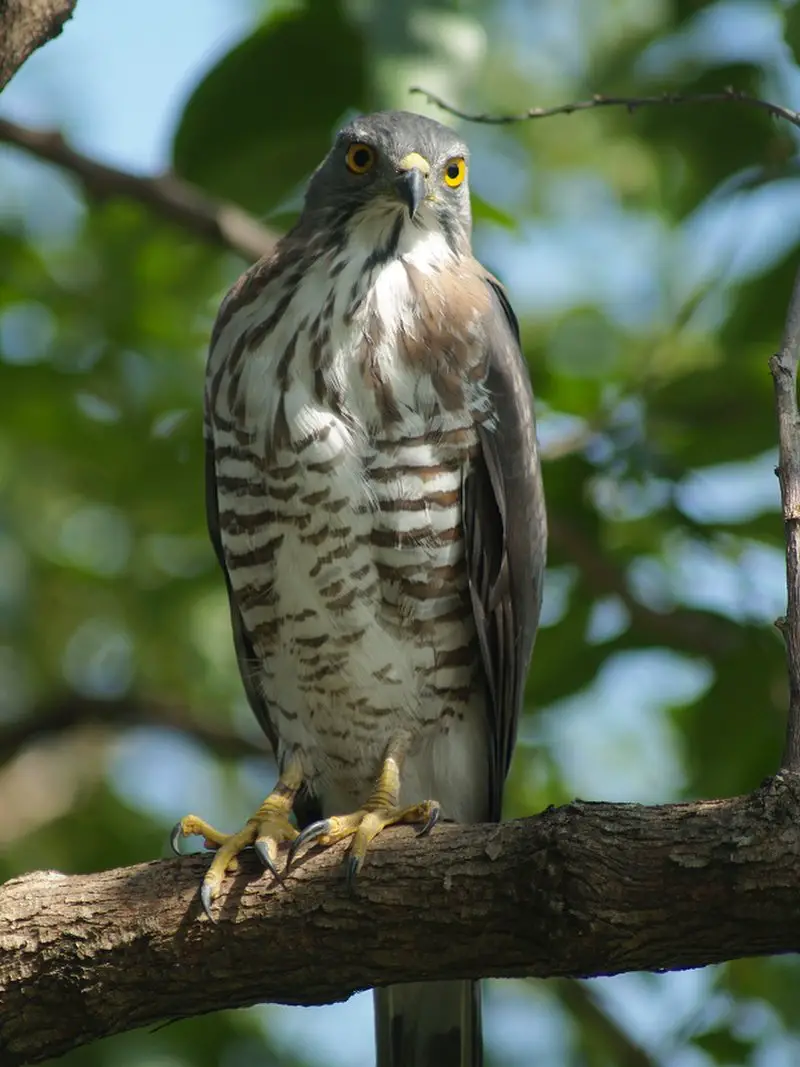
The Crested Goshawk bird is a diurnal raptor found in tropical Asia. Belonging to the Accipitridae family, it shares characteristics with buzzards, harriers, and eagles.
Its wings are short and broad, with a long tail, aiding in its movement through trees. The larger female Crested Goshawk can grow up to 46 cm in length, much bigger than the male.
These birds are skilled hunters and have adapted well to their forest habitats, using their sharp talons and beaks to catch prey.
Despite their ferocity, Crested Goshawks are still threatened by habitat destruction across Asia, rendering them vulnerable in many regions.
Overall, the Crested Goshawk bird is a graceful predator that perfectly exemplifies the beauty and ferocity of the natural world.Scientific classification:
| Kingdom | Animalia |
| Phylum | Chordata |
| Class | Aves |
| Order | Accipitriformes |
| Family | Accipitridae |
| Genus | Accipiter |
| Species | A. trivirgatus |
Also Featured In: Most Common Taiwan Birds, Birds of Goa
18. Greater Racket-Tailed Drongo
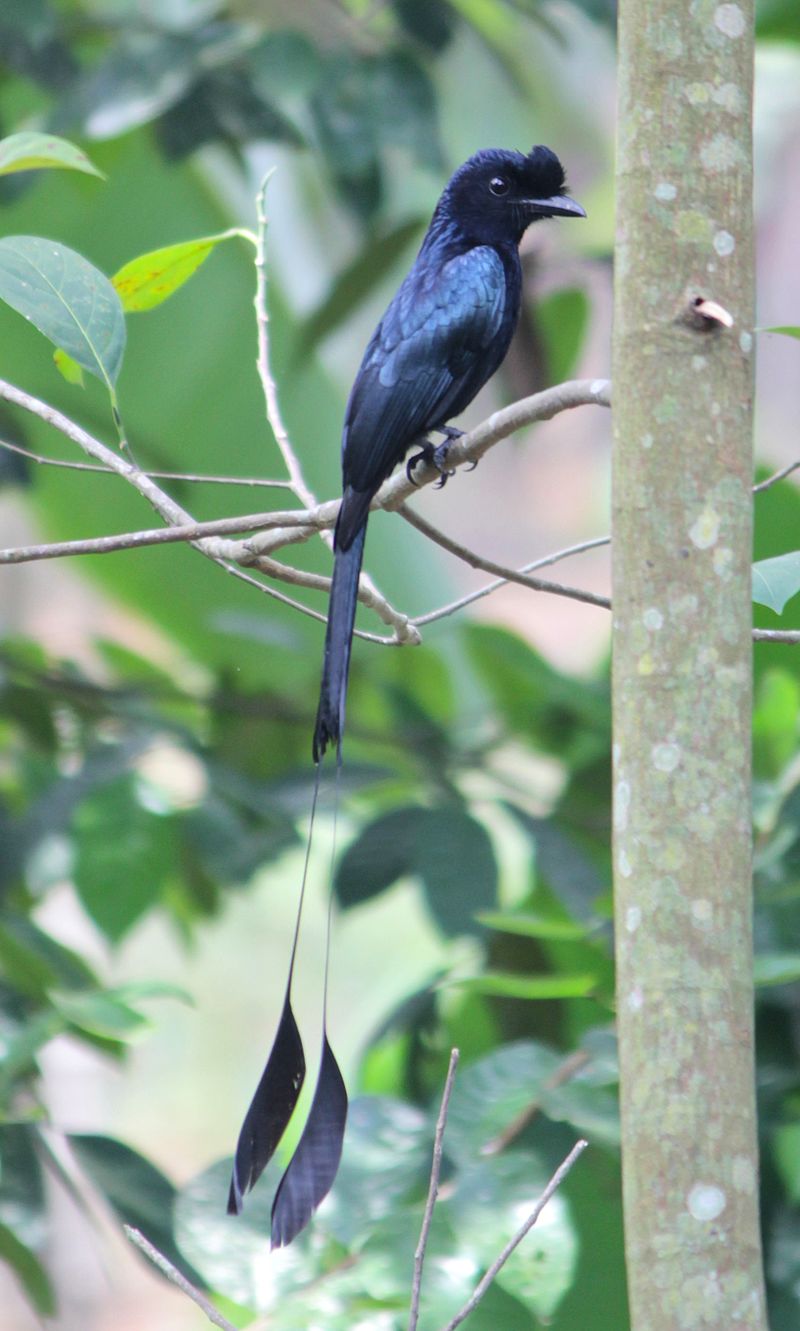
The Greater racket-tailed drongo is a medium-sized bird that inhabits forests in Asia. This bird is easily recognized by its elongated outer tail feathers which have webbing only at the tips.
The Greater racket-tailed drongo is part of the Dicruridae family, which also includes other types of drongos.
They are known for their conspicuous nature, often perching out in the open and using a variety of loud calls that include perfect mimicry of other birds and animals.
They are skilled at attracting attention, and can be seen flashing their long tails to intimidate predators or attract mates.
The Greater racket-tailed drongo is an important member of its ecosystem, helping to control insect populations and acting as a key prey species for predators.
Overall, this bird is a fascinating and important species of the Asian forests it inhabits.Scientific classification:
| Kingdom | Animalia |
| Phylum | Chordata |
| Class | Aves |
| Order | Passeriformes |
| Family | Dicruridae |
| Genus | Dicrurus |
| Species | D. paradiseus |
Also Featured In: Endemic Sri Lanka Birds, Pet Birds that Live in India
19. Brown-Throated Sunbird
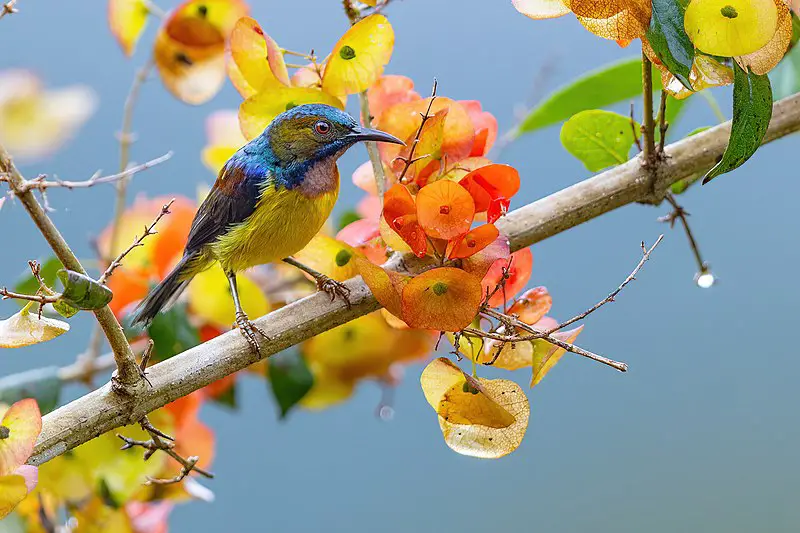
The brown-throated sunbird, also known as the plain-throated sunbird, is a small bird that belongs to the family Nectariniidae.
Commonly found in south-east Asia, it inhabits a variety of semi-open habitats, from Myanmar to the Lesser Sundas and west Philippines.
This species is recognized by its brownish plumage and distinctive brown throat, which differentiates it from the grey-throated sunbird species found in the Philippines.
The brown-throated sunbird has a slender beak that allows it to feed on nectar from flowers and insects.
It is known for its acrobatic flight and can often be seen flitting rapidly between flowers in search of food.
These birds are essential pollinators for many plant species, making them an important contributor to the ecosystems in which they live.Scientific classification:
| Kingdom | Animalia |
| Phylum | Chordata |
| Class | Aves |
| Order | Passeriformes |
| Family | Nectariniidae |
| Genus | Anthreptes |
| Species | A. malacensis |
Also Featured In: Birds that Commonly Found in Bali, Birds that Live in Kuala Lumpur
20. Black-Headed Bulbul
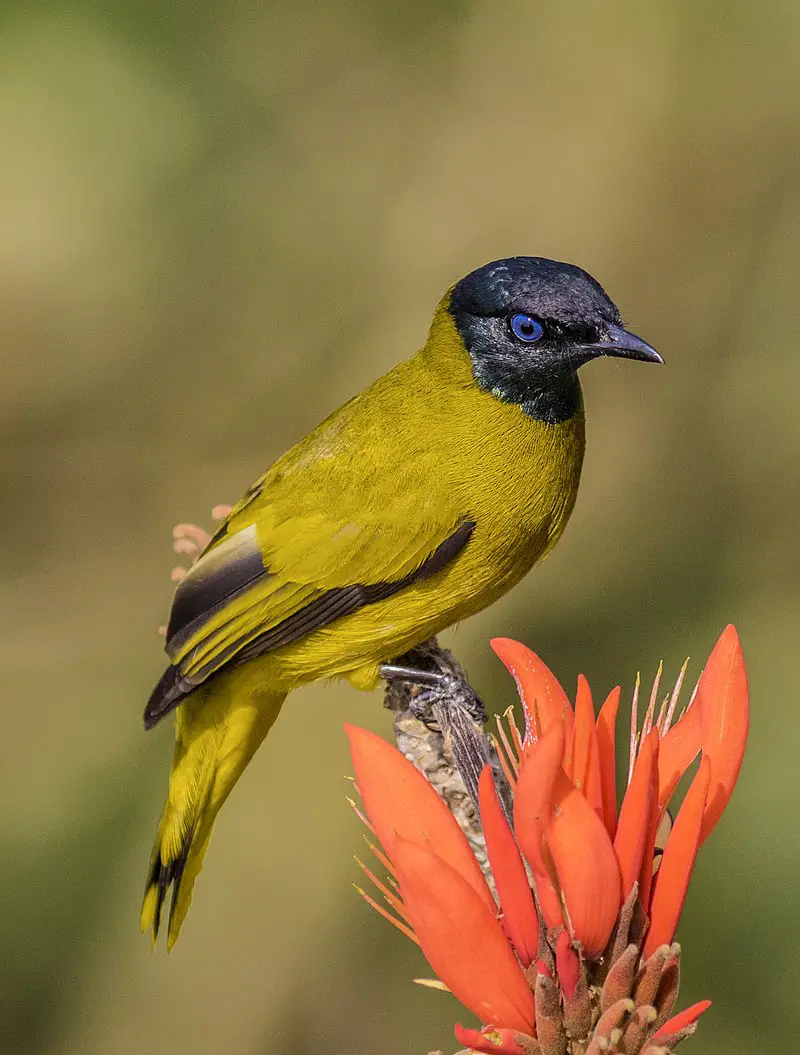
The black-headed bulbul is a bird belonging to the Pycnonotidae family. It can be found in forests across southeastern Asia.
Originally thought to be a member of the genus Turdus, it was later moved to Pycnonotus as Pycnonotus atriceps.
Recent research has shown that this genus is polyphyletic, leading to the creation of a new genus, Brachypodius, and the species being renamed Brachypodius melanocephalos.
This bird is easily recognizable due to its black head and yellow underparts. It feeds on fruit and insects, and is known for its sweet song.Scientific classification:
| Kingdom | Animalia |
| Phylum | Chordata |
| Class | Aves |
| Order | Passeriformes |
| Family | Pycnonotidae |
| Genus | Brachypodius |
| Species | B. melanocephalos |
Also Featured In: Native Birds Of Ko Chang District, Common Birds of Ko Lanta